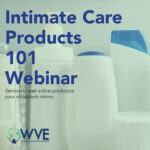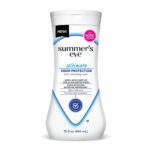
How clean is clean? Americans have become increasingly concerned about their exposure to germs and the diseases they may cause. Advertisements tell us of new and improved products which will protect our family’s health by killing germs found on every surface we may touch. Unfortunately, such advertisements fail to mention that many cleaning products contain chemicals that may actually be harmful to our health.
Certain chemicals used in common cleaning products have been associated with reproductive harm such as decreases in fertility, menstrual changes, changes in the onset of puberty, cancers of reproductive organs, miscarriage, premature birth and other effects. Chemicals of concern include:
- Glycol ethers, such as 2-butoxyethanol, solvents commonly found in glass cleaners and all-purpose spray cleaners, that have been associated with low birth weight in exposed mice;
- Alkyl phenol ethoxylates (APEs) and nonylphenol ethoxylates (NPEs), surfactants found in laundry detergents, stain removers, and all-purpose cleaners, that have been found to reduce embryo survival in fish and alter tadpole development; and
- Phthalates, carriers for fragrance in glass cleaners, deodorizers, laundry detergents and fabric softeners, that are linked to adverse effects on male children, reduced sperm count in adult men, and increased allergic symptoms and asthma in children.
Studies suggest that precaution may help protect the next generation
Sometimes the effects of chemical exposure are not seen until the next generation. Many scientists now believe that chemical exposure, even at very low levels, can have adverse impacts on the reproductive system. When a pregnant mother is exposed to chemicals, this exposure can also impact the developing child and lead to developmental effects, such as birth defects, low birth weight, impacts on cognitive development or other
harmful outcomes. Research has shown the following:
- Pregnant women exposed to glycol ethers in their work environments were significantly more likely to have children with birth defects such as neural tube defects and cleft lip.
- A California study measured actualemissions of glycol ethers and other volatile organic compounds (VOCs) under normal home cleaning conditions. In particular, potentially dangerous levels of these chemicals were seen in smaller, poorly ventilated rooms (such as a bathroom), where floor cleaners were used in combination with air fresheners.
- In the United Kingdom, a study of pregnant women showed a link between the use of air fresheners and aerosol sprays and an increase in headaches and depression in the mothers as well as ear infections and diarrhea in their babies.
Due to both practical and ethical considerations, most of the research on reproductive harm and chemicals in cleaning products has been conducted in the laboratory and does not involve human testing. Still, this research raises questions and concerns about the potential impacts of human exposure to these chemicals. For instance:
- Studies on laboratory mice found reduced fertility among female mice exposed to 2-butoxyethanol, and lower birth weight in their offspring.
- In laboratory studies, offspring of rats exposed to 2-(2-Methoxyethoxy) ethanol developed various birth defects including malformations of the ribs and cardiovascular system.4
- Nonylphenol (NP) is a breakdown product of NPEs which is known to mimic the hormone estrogen and impact the production of testosterone, both of which can have numerous reproductive and other health impacts. In female rats, exposure to NP delayed the onset of puberty and altered fertility. In male rats, octylphenol and octylphenol ethoxylate decreased testicular size and sperm production.
- Both octylphenol and nonylphenol stimulated the growth of human estrogen-sensitive breast cancer cells.
- A significant concern around the use of APEs centers around their impact on wildlife, particularly in aquatic ecosystems. The United States Geological Survey found breakdown products of laundry detergents in 70% of North American streams. These chemicals can cause harm to fish, frogs, turtles and other aquatic life. Studies have shown that even low-level exposure has reduced the number of fertilized trout eggs and caused reduced embryo survival and abnormal embryos in another fish, the Japanese Medaka.
Actions you can take to protect your family from exposure to chemicals in household cleaning products:
- Look to see if the products you use are listed on the fact sheet, Household Cleaning Products Containing Chemicals of Concern, (or Appendix 1 of the report, Household Hazards). If your products are not on the list, use the 1-800 number on the product package to call the manufacturer. Ask for a list of product ingredients and encourage them to provide this information on product labels.
- While the presence of a chemical of concern in a product does not necessarily imply the product will cause harm, the potential health risks associated with exposure do present a concern. From a precautionary standpoint, if you or someone in your home is already affected by asthma, you may wish to avoid products containing these chemicals.
- Make your own effective, non-toxic cleaning products using simple and inexpensive ingredients like vinegar and baking soda.
- Buy only from companies that list all product ingredients on the package.
- Tell Congress to require companies to disclose all ingredients in household cleaners on product labels and to replace toxic chemicals with safer alternatives.
- Read WVE’s fact sheet, “WHAT YOU CAN DO: 7 Simple Steps to Help Reduce Your Exposure to Toxic Chemicals from Household Cleaning Products.”





